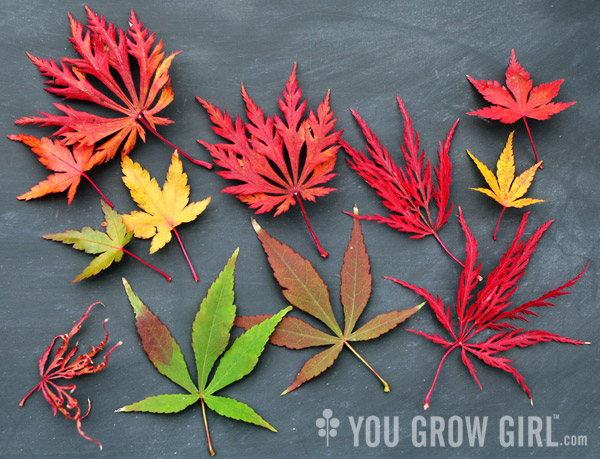
Colourful fall leaves collected from the 7 small Japanese maple trees I am growing in my garden.
The colder days and nights of fall have really brought the city’s Japanese maples (Acer) trees into full form. Lately, as I walk through Toronto neighbourhoods, I am blown away again and again by the vibrant reds, oranges, and yellows on display. This is their season.
Japanese maples are the perfect urban tree: they grow slowly, are fairly hands-off, have beautiful form, and they bring a pop of colour to a small space that shifts and transforms through the seasons. You can also eat them (battered and fried) or use them to dye threads, yarn, and fabric. While a mature tree can be quite expensive to buy, a small seedling of some of the more interesting types can run about $20-35. And if you’re lucky (as I have been), you may know someone who has seedlings popping up in their garden that they’re willing to part with freely or cheaply.
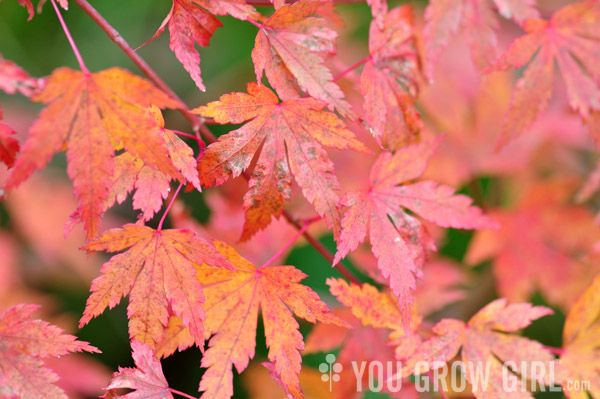
This is the Japanese maple that started it all. I was so worried at the time about keeping it alive, but it really hasn’t been difficult at all. I keep it in a large pot and have had success over-wintering it in a temporary spot in the ground as well as simply hauling the plant, pot and all, into a shed that gets light. The trick has been to make sure to add snow throughout the winter to prevent the soil from drying out. As you can see, the fall colour is significantly different from its summer foliage. This little guy grew a seedling of its own, which I have since passed on to a friend.
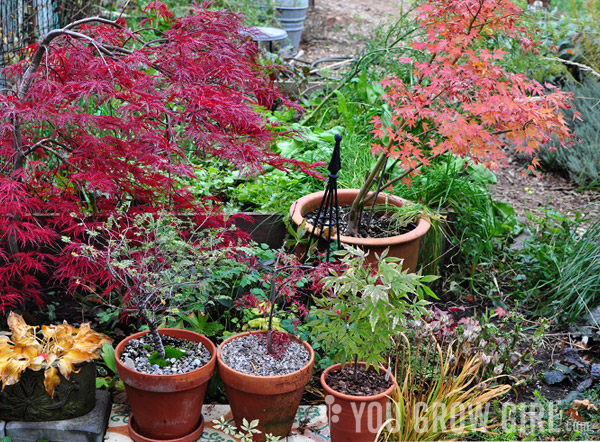
My yard is mostly sunny with sandy soil. I have one small area of partial sun. I keep my Japanese maples here, primarily in pots. Only one plant is currently growing in terra firma. I had one other in the soil for a year, but it was not happy there and suffered from too much sun, wind exposure, and drought. It is much happier in its pot.
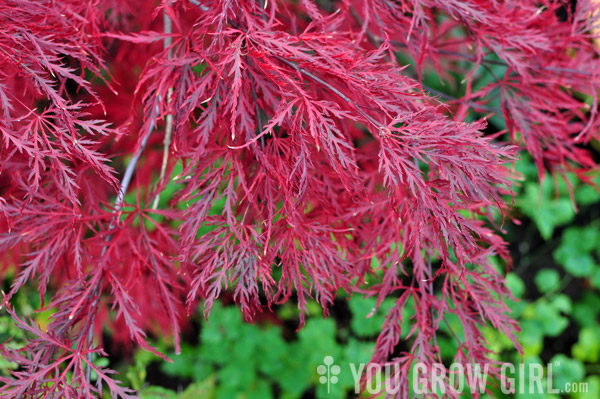
This crimson beauty is the third Japanese maple that I acquired and the second that I bought. It is a fairly common threadleaf variety called ‘Red Dragon’. A decent-sized tree sells in just about any garden shop for about $50 or so. I got mine on sale at a grocery store for half of that price.
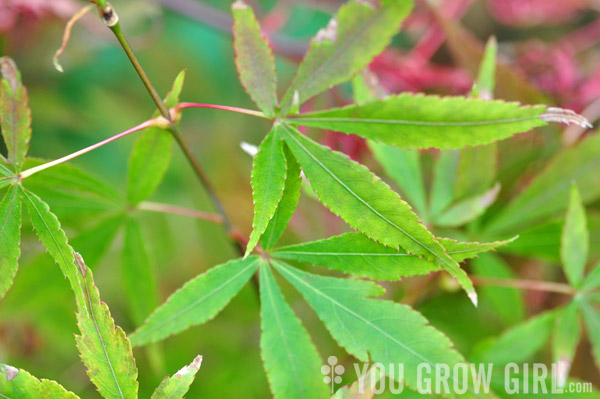
I only just acquire this beauty (Acer palmatum) last weekend, another gift from my friend Barry that was grown from seed. I will be heeling it into the ground in a protected spot in my garden before the soil freezes.
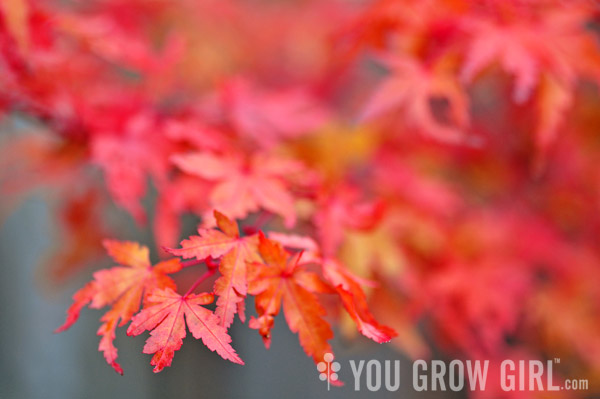
Another friend Uli surprised me with this tall, upright plant this past summer. Uli is another friend whose love for Japanese maples has inspired my growing interest and whose encouragement has spurred me on to try and take more acers on. She has several gorgeous specimens in her garden and this particular plant came up as a seedling underneath one of them.
I didn’t want to get too sappy in the post but wanted to say that I feel very fortunate to have acquired so many of these beautiful trees as gifts, especially since they were all grown from seed by people that I love as friends and highly respect as gardeners.
Looks like you have fallen into Autumn.
As someone who lives just a bit too far south for Japanese maples, I get maple envy when I see them in other gardens. I love the intricate shaped ones.
Thank you for reminding me that there are advantages to living somewhere that gets cold in the winter!
They are so beautiful. Lucky you having such a lovely variety. I particularly like the one in the last photo, such a fantastic leaf shape as well as the stunning colour.
So beautiful!!!
I am new to blogging, and came across your site. I appreciate your love for Japanese Maple Trees…We have a few of our own. My husband’s favorite is his Green Cut Leaf that is almost as wide as it is tall now. I enjoy your site.
I too lusted for these gems a few years ago, and without a penny for investments. I toured local cemeteries in the fall, gathered fallen seeds in baggies, let them winter in a very cold garage and then planted them in flats next spring. About 80% sprouted and, kept kind of dry, almost all survived pricking up into little pots, and then bigger and bigger ones. They summered under tall plants in very bright shade. They wintered outside under leaves and under evergreens after a decent soak. I kept them Dry, like the soil under their parents. Now, most are 18 to 24 inches high, five years old and very pretty. Very little fertilizer, just the mulch the rest of the perennials get.
Autumn beauties. Gourgeous, those japanese trees leaves:)